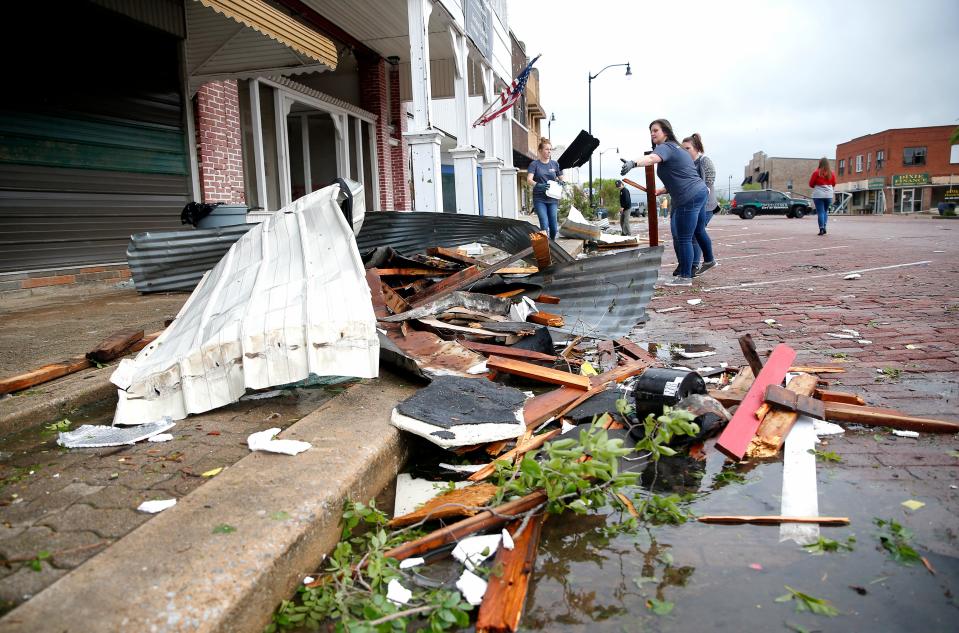FEMA wants to do a better job helping Native American tribes prep for disasters. Here's how.
- Oops!Something went wrong.Please try again later.
Federal officials unveiled a new strategy Thursday to help tribal nations recover from natural disasters and prepare for worst-case events.
The detailed plans are a first for the Federal Emergency Management Agency, which has faced criticism for its response to tribal communities needing urgent help. Many are located in rural or remote areas, where floods, fires and snowstorms can shut down access to basic goods and services for weeks.
Tribal leaders have also long voiced concerns over the rules attached to the federal disaster aid. Some tribes might not have the capacity to navigate paperwork hurdles or the money to cover up to 25% of costs to rebuild.
'12 years of hell': Former students recount life at Native American boarding schools in Oklahoma

As part of their new, five-year strategy, FEMA officials say they will do more to help tribal leaders understand federal processes, secure aid and stay informed about looming threats.
“This is a really big milestone, I think, for FEMA to take this effort and try to continue to improve our relationship in the way that we can provide assistance to tribal nations before, during and after disasters,” FEMA Administrator Deanne Criswell said during a media call about the tribal strategy.
The strategy sets specific goals for FEMA officials, such as hosting regular training sessions throughout the United States, publishing an annual report about their work with tribal nations and meeting monthly with tribal emergency managers.
The goals also include helping tribal leaders address and lessen the risks of climate change, such as rising sea levels.
The 16-page strategy was developed after years of talks and 14 formal government-to-government consultations this spring. Representatives of 80 tribal nations attended those sessions.
May tornadoes, flooding: Seven Oklahoma counties eligible for federal assistance
Many tribal leaders asked FEMA officials to travel more often to meet with tribal leaders and work in their communities, Criswell said.
“So we’re going to do that,” she said. “That helps us increase our workforce’s understanding of what the barriers that tribes face are, so we can work to help reduce those barriers and help them get the resources that they need.”
Native American tribes have only been able to request FEMA aid since 2013
Although FEMA was founded in 1979, it wasn’t until 2013 that Congress allowed tribal leaders to request disaster recovery funds directly from the agency. Before that, tribes could only secure aid by working through state counterparts.
Joint requests still occur. One major reason is the requirement that local governments help foot the bill for recovery projects, according to tribal leaders surveyed in a 2018 federal report. By working under a state request, tribes can share those costs, which typically work out to a 75% federal and 25% local split.
Federal officials lifted the cost-share requirement for disaster funding tied to COVID-19. FEMA also helped in the rollout of vaccines in tribal communities, which were hit disproportionately hard by the pandemic.
The agency’s new strategy on working with tribal nations is part of a bigger focus by the Biden administration to consult earlier on and more often with tribal leaders, citing the federal government’s trust responsibilities to tribes. Criswell said she understands tribes’ sovereign rights.
“We also understand that tribal nations face unique and enduring hardships,” she said. “FEMA can only be successful when our programs are fully accessible in a practical sense.”
Molly Young covers Indigenous affairs for the USA Today Network's Sunbelt Region. Reach her at mollyyoung@gannett.com or 405-347-3534.
This article originally appeared on Oklahoman: 'Milestone' FEMA strategy aimed at helping tribes respond to disasters

